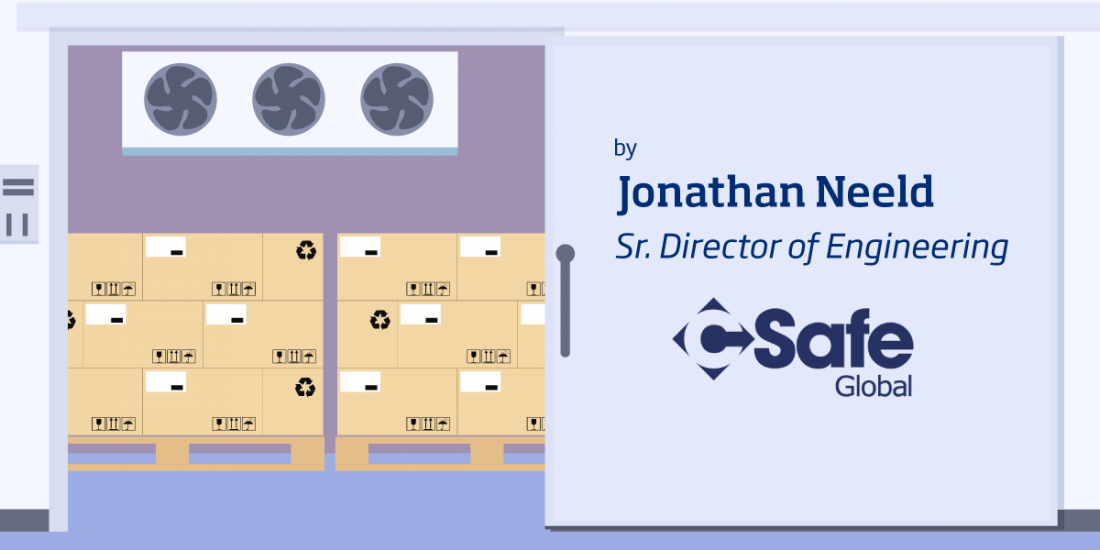Pharma cold chain: Consider ‘Hibernation’ when potential losses are unbearable
The old proverb — the best-laid plans … often go awry — becomes quite relevant in the preparation, transport and delivery of temperature-sensitive pharmaceuticals. Such products must maintain very specific temperatures throughout complex, fragmented transit routes, to reach destinations all over the globe. Inevitably, delays often occur along the way even on the most highly organized and highly automated routes. Hibernation allows properly engineered passive shipping solutions to temporarily pause the clock and extend the life of the Phase-Change Material (PCM*)/refrigerant to sustain the payload through to its final destination.
What is Hibernation?
Hibernation refers to the ability to temporarily “pause” the fixed window of time the PCM will maintain the required temperature by holding the entire passive shipping solution in a refrigerated unit or room (at the same or lower temperature than the payload), without compromising the customers product or unpacking the contents. For properly designed passive shipping solutions, hibernation can occur at any point along the shipment route.
By temporarily storing the entire packed shipping solution inside a refrigerated unit, the conditioned PCM will sustain the required temperature setpoint, but the release of stored energy will stop (or be significantly reduced). As the PCM is not absorbing any ambient thermal energy while in hibernation mode, it is able to remain in equilibrium with the setpoint temperature of the shipped product during this period. Then, once the interrupted journey continues, the undegraded PCM will resume where it left off for the remainder of the trip.
Importantly, a well-designed shipping solution when placed in hibernation enroute can also “recharge” the PCM that is packed inside the passive shipping solution, thereby potentially further extending the safe travel duration. Note, the delay time of the passive solution while inside a refrigerated unit does not “count” against its qualified duration. Several examples are described below.
Hibernation: An important option for passive shipping solutions
Today, passive shipping solutions are increasingly being used as a convenient option for transporting small and large quantities of high-value, temperature-sensitive products at the required product temperatures. However, shipment delays can jeopardize the payload integrity due to the finite durations of the packaging and stored energy in the refrigerant. With a correctly designed shipping solution, hibernation provides an important option to help properly designed passive solutions withstand such shipping delays while continuing to safeguard the payload through to its final destination.
The qualified duration — it’s not just the time in transit
By design and qualification, the duration of a thermal shipping solution is defined as the length of time during which the product temperature can be guaranteed in a defined ambient profile. It is important to remember that the duration must account for not just the time that the package is in transit. Rather, the clock starts as soon as the PCM has been taken out of the pre-conditioning environment and placed inside the passive solution as part of the shipment pack out. Qualified duration must also account for the time the package is spending in transit and the wait time before it is finally unpacked at its final destination. By design, passive cold chain shipping solutions are typically specified for a duration of 24 to 120+ hours depending on the thermal efficiency of the insulation material used, environmental conditions and the internal pack out configuration.
Now imagine a scenario in which a package is prepared and ready to ship on Friday afternoon but misses the pickup and must sit in a warehouse until Monday morning. How about another scenario in which, after crossing a border, the parcel is held in Customs for hours or even days? The unanticipated delays will consume some of the packaging solution’s stored energy, potentially compromising the product inside unless additional steps are taken to allow the packing solution to hibernate for the delay period to prevent thermal decay.
Choose shipping solutions that will enable hibernation as an option
The ability of a passive shipping solution to use hibernation in the face of delays depends on its design and the insulation and PCM materials selected.
Most PCMs will not crystallize (freeze) and melt at exactly the same temperature, due to thermal hysteresis. For example, some PCMs may melt at 5°C but recrystallize at 2°C or even lower. This type of PCM would not be well-suited for a passive solution that may need to temporarily hibernate inside a commercial refrigerator that is set at 2–4°C, as the PCM may not enter hibernation correctly and be appropriately recharged during that period of stasis.
When pharmaceutical/life sciences stakeholders are working with their cold-chain packaging partners, they should evaluate PCM options that are both appropriate for the temperature-sensitive product and that will enable temporary periods of hibernation, if needed.
By working closely with your cold chain packaging partners, pharmaceutical manufacturers can ensure that hibernation remains an option to temporarily pause the temperature-decay clock and safeguard the payload should shipping delays arise. This winning strategy will help ensure the integrity and efficacy of lifesaving therapies and vaccines.
*PCMs are versatile refrigerants that are based on hydrated salts, paraffins, fatty acids, alcohols. Once they are conditioned to the required setpoint temperature, PCMs can maintain ultralow setpoint temperatures inside passive shipping solutions that are equipped with advanced insulation materials for the duration of the trip.

